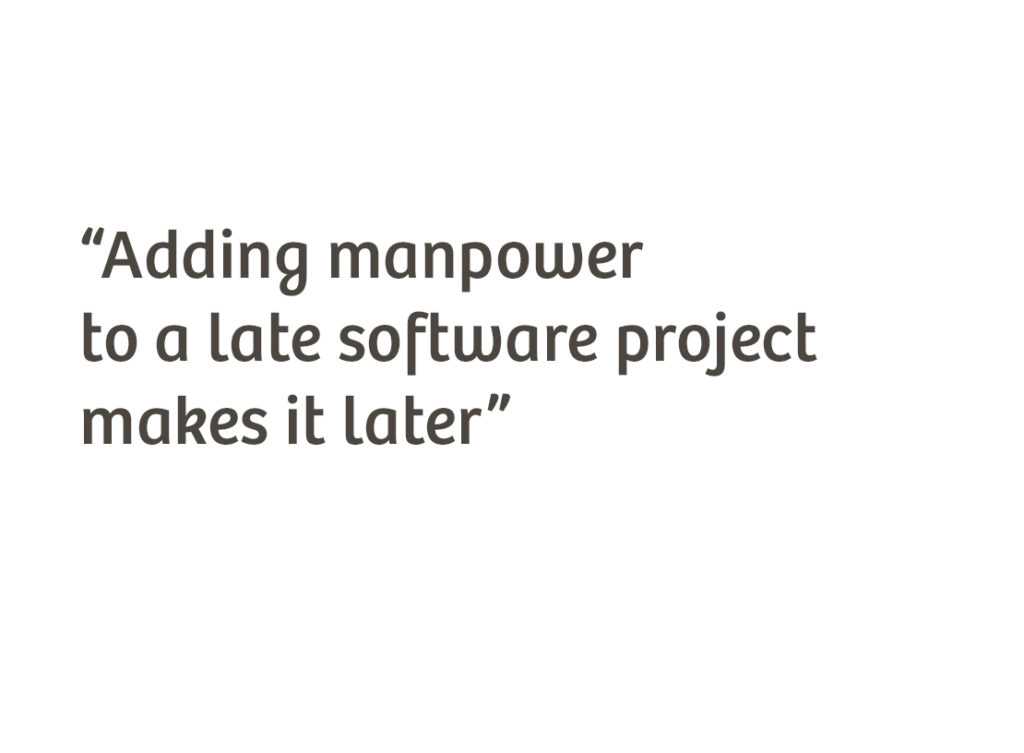What It Is:
Brooks’ Law is a principle in software development attributed to Frederick P. Brooks, Jr., introduced in his classic book “The Mythical Man-Month” (1975). Brooks’ Law states: “Adding manpower to a late software project makes it later.” The idea is that adding more people to a project that’s already behind schedule does not necessarily accelerate its completion; in fact, it may slow it down further due to the complexities of communication and coordination.
How to Use It:
Using Brooks’ Law in Agile Coaching:
- Team Size and Productivity:
- Discuss the implications of team size on productivity with the Agile software delivery team. Emphasize the importance of effective communication and collaboration, especially in larger teams.
- Avoiding Overstaffing:
- Encourage the team and stakeholders to carefully consider the impact of adding more people to a project, particularly if it’s already running behind schedule. Overstaffing might introduce more complexity and hinder progress.
- Optimizing Existing Teams:
- Focus on optimizing the efficiency and collaboration within existing teams. Ensure that current team members are working cohesively before considering the addition of new team members.
- Emphasizing Collaboration:
- Stress the importance of effective communication and collaboration practices. Agile methodologies, with their emphasis on small, cross-functional teams, align well with the spirit of Brooks’ Law.
- Scaling Agile Carefully:
- If the organization is scaling Agile practices to larger projects, do so carefully and with attention to maintaining effective communication. Consider frameworks like Scrum of Scrums or LeSS (Large Scale Scrum) that provide guidance for scaling Agile.
References:
- “The Mythical Man-Month” by Frederick P. Brooks, Jr.:
- The original source of Brooks’ Law is his book “The Mythical Man-Month,” where he discusses the challenges of software engineering, team dynamics, and project management.
Visit the Agile Coach’s Toolkit for more definitions, models, theorems and stuff.

